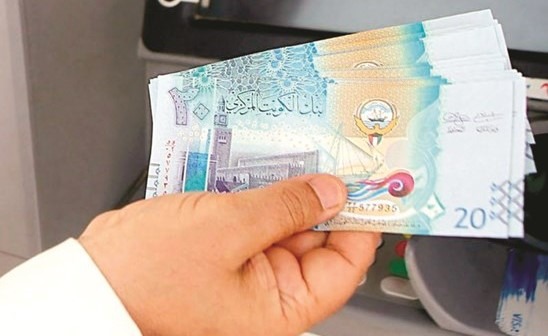The World Bank projects a significant downturn in Middle East economies’ growth, dropping to 1.9%. This decline will be most pronounced in the oil-exporting Gulf Cooperation Council countries. Kuwait’s per capita GDP has reached $49.2 thousand, ranking fifth in the Gulf, following Qatar at $97.1 thousand (first), the UAE at $74.3 thousand (second), Bahrain at $51.85 thousand, and Saudi Arabia at $50 thousand. The Sultanate of Oman ranks sixth and last with $35.33 thousand.
According to the latest World Bank report titled “Achieving Balance: Jobs and Wages During Crises in the Middle East and North Africa,” real GDP growth rates in Kuwait are anticipated to reach 0.8% in 2023, down from 7.9% in 2022 and 1.3% in 2021. Projections indicate a rise in real GDP growth rates to 2.6% in 2024, reports Al-Anba daily.
The World Bank estimates a decrease in the growth rate of real GDP per capita to -0.1% in 2023, with an expected increase to 1.7% in 2024, compared to the 7.4% growth achieved in 2022 and 3.9% in 2021. The report anticipates a significant drop in inflation in Kuwait to 2.4% in 2024, down from the estimated 3.3% in 2023, reflecting a continued decline compared to 4.3% in 2022 and 3.4% in 2021.
The World Bank anticipates Kuwait will record the highest growth rate in the current account balance in the Gulf, reaching 23.1% in 2023, surpassing Qatar at 16.1%, the UAE at 12.4%, Bahrain at 7.85%, Saudi Arabia at 5.6%, and the Sultanate of Oman at 5%. Forecasts suggest Kuwait will maintain the highest growth rates in the current account balance in the Gulf in 2024, at 19.1%, followed by Qatar at 13.3%, the UAE at 11.8%, Bahrain at 6.6%, Saudi Arabia at 5.75%, and the Sultanate of Oman at 5.1%.
The World Bank predicts a decline in the region’s GDP growth to 1.9% in 2023, down from 6% in 2022, attributed to reduced oil production, low oil prices, tightening global financial conditions, and high inflation.
The report highlights a more pronounced growth decline in oil-exporting Gulf Cooperation Council countries in the Middle East and North Africa region. Real GDP growth in these countries is expected to reach only 1% in 2023, down from 7.3% in 2022, due to declining oil production and prices. For developing oil-exporting countries, growth is projected to decrease from 4.3% in 2022 to 2.4% in 2023.
Oil-importing countries continue to grapple with challenging global financial conditions and high inflation rates, likely leading to a growth rate of 3.6% in 2023, down from 4.9% in 2022. These trends indicate a shift, marking the end of the disparity between the region’s countries, as it now resembles two distinct regions. Since 2022, oil-exporting countries have been experiencing significantly faster growth than oil-importing countries.
The report underscores that the reduction in oil production and its price decrease result in diminished current transaction and public finance balances in oil-exporting countries within the region.
The current account balance in Gulf countries is expected to decline to 9.6% of GDP, down from its peak of 15.7% in 2022, and the budget surplus is projected to sharply decrease to 0.8% of GDP, compared to 4.9% in 2022. Developing oil-exporting countries are also expected to witness a decline in their current account balances, decreasing from an average of 10.3% of GDP in 2022 to 4.2% in 2023, with their public financial balances shifting into deficit, recording 2%.

















